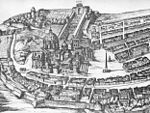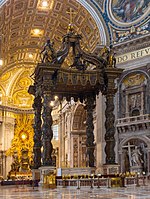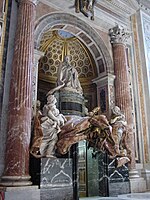Domus Sanctae Marthae
1996 establishments in Vatican CityBuildings and structures completed in 1996College of CardinalsOfficial residences in Vatican CityProperties of the Holy See ... and 2 more
Residential buildings in Vatican CitySites of papal elections

The Domus Sanctae Marthae (Latin for Saint Martha's House; Italian: Casa Santa Marta) is a building adjacent to St. Peter's Basilica in Vatican City. Completed in 1996, during the pontificate of Pope John Paul II, it is named after Martha of Bethany, who was a sibling to Mary and Lazarus of Bethany. The building functions as a guest house for clergy having business with the Holy See, and as the temporary residence of members of the College of Cardinals while participating in a papal conclave to elect a new pope. Pope Francis has lived in a suite in the building since his election in March 2013, declining to use the papal apartments in the Apostolic Palace.
Excerpt from the Wikipedia article Domus Sanctae Marthae (License: CC BY-SA 3.0, Authors, Images).Domus Sanctae Marthae
St. Martha's Square,
Geographical coordinates (GPS) Address Nearby Places Show on map
Geographical coordinates (GPS)
| Latitude | Longitude |
|---|---|
| N 41.9007 ° | E 12.4533 ° |
Address
Autorità di Informazione Finanziaria
St. Martha's Square
00120 , Vatican City
Vatican City
Open on Google Maps









